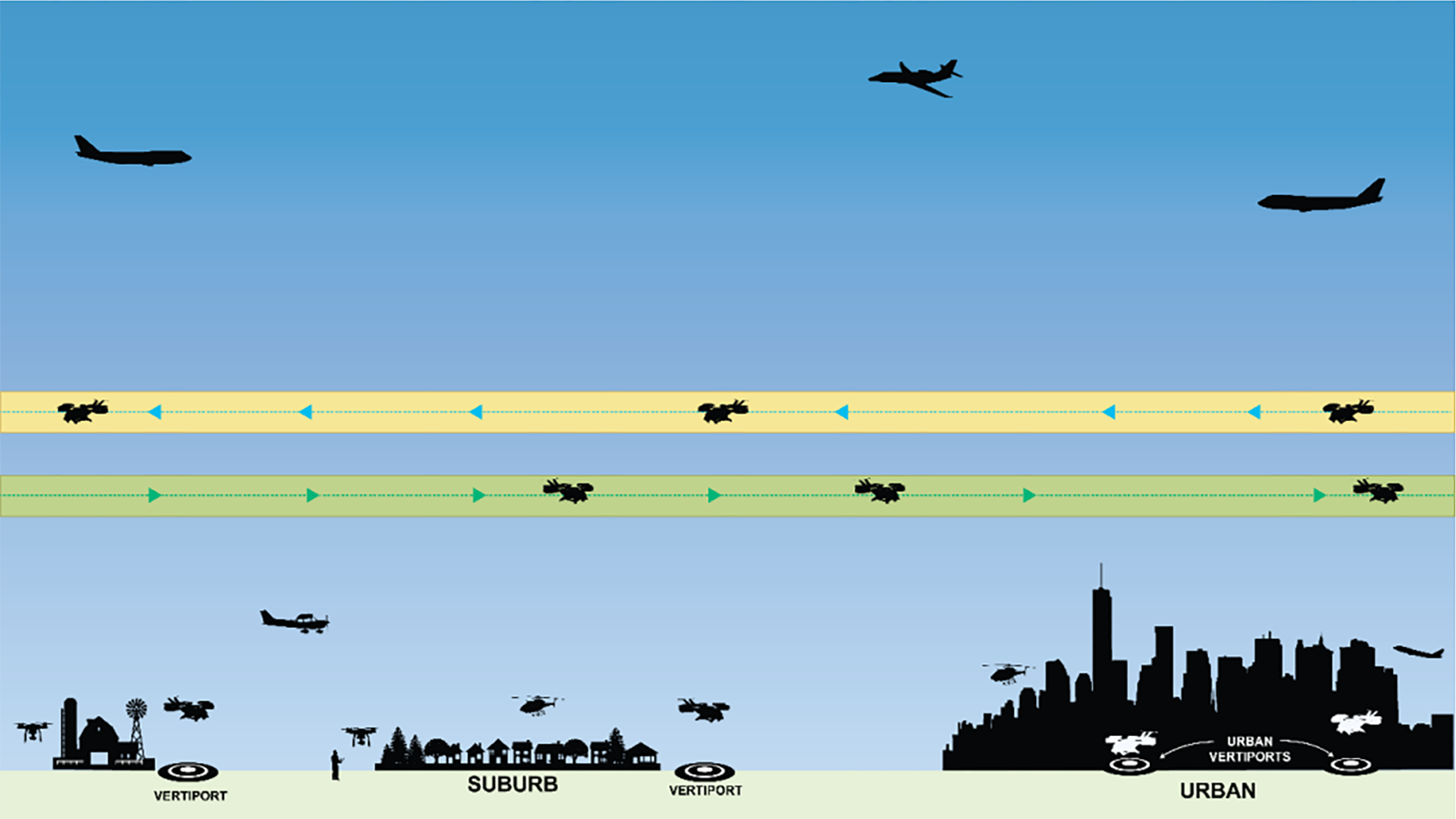Stay Up to Date
Submit your email address to receive the latest industry and Aerospace America news.
Reactions to revisions range from positive to questioning feasibility of the approach’s “corridor” concept
Aircraft developers and analysts are poring over FAA’s updates to its airspace blueprint for urban air mobility, the term for flights in and around cities by electric air taxis and cargo aircraft under the advanced air mobility movement.
The 33-page “UAM Concept of Operations Version 2.0” released by FAA May 3 provides more details about the air taxi “corridors” the agency plans to establish — a traffic management concept developed together with NASA and first identified in the original blueprint released in 2020.
The new document places new emphasis on cooperation among FAA, other agencies and aspiring operators, as FAA anticipates turning the blueprint into airspace rules for air taxi and cargo services. Most of the proposed services will use eVTOLs, the electric vertical takeoff and landing designs now in testing.
“The FAA is right to acknowledge that while their aviation safety mission is absolutely paramount, the complexity of UAM operations will require extensive input from industry operators and from other regulatory agencies to ensure fair and equitable practices,” says Dan Sloat of the Advanced Air Mobility Institute in Boston by email.
He’s referring to a section of the blueprint that introduces the term “cooperative operating practices” to describe the anticipated rules for air taxis and cargo versions. The blueprint identifies these COPs as “industry-defined, FAA-approved practices.”
Coordination with other agencies will also be required, given that some COPs may “fall under the purview of regulatory agencies beyond FAA,” according to the blueprint.
Sloat gives a notional example: The Department of Housing and Urban Development may want to ensure that air taxi routes include communities that historically have had poor access to transportation.
Overall, Sloat gives FAA kudos for incorporating a lot of feedback provided in recent years from AAM companies and observers like himself.
Robin Riedel, an analyst with consulting firm McKinsey, calls the update “another great step” in shaping the future of AAM.
“What is particularly helpful is the additional detail on key elements of what operations will look like, such as air traffic services, as well as the focus on how the ecosystem has to come together and support each other,” Riedel says by email.
For example, the updated plan anticipates a gradual “introduction of highly automated, cooperative environments” that will require new types of air traffic services, like remote operators.
Not all who read the updated document were as impressed, though.
Greg Dyer, director of airspace services at Colorado consulting firm Woolpert cautions that the document is still a little vague on many points as FAA waits to see how actual flight services shape up once air taxis receive the type certificates needed to operate.
He would like to see more details about how FAA will delegate some of its oversight responsibilities to service providers to ensure safe operations. He also considers the concept of flight corridors to be “incomplete.”
“As described, they [corridors] would be a strange combination of airspace organization that would not stand up to real world weather events. Ideally, we need to be thinking about full integration with these vehicles joining the current community of airspace operators,” Dyer says by email.
The document anticipates that initially the corridors will be designed to accommodate limited traffic. But “with continued growth, UAM operational demand may result in exceeding a UAM Corridor’s initial design capacity,” and that would require creation of more tracks for “increased performance capabilities” or even “passing zones.”
FAA says the update reflects “the continued maturation of UAM” and feedback received on Version 1.0.
Get the latest news about advanced air mobility delivered to your inbox every two weeks.
About paul brinkmann
Paul covers advanced air mobility, space launches and more for our website and the quarterly magazine. Paul joined us in 2022 and is based near Kennedy Space Center in Florida. He previously covered aerospace for United Press International and the Orlando Sentinel.
Related Posts
Stay Up to Date
Submit your email address to receive the latest industry and Aerospace America news.




